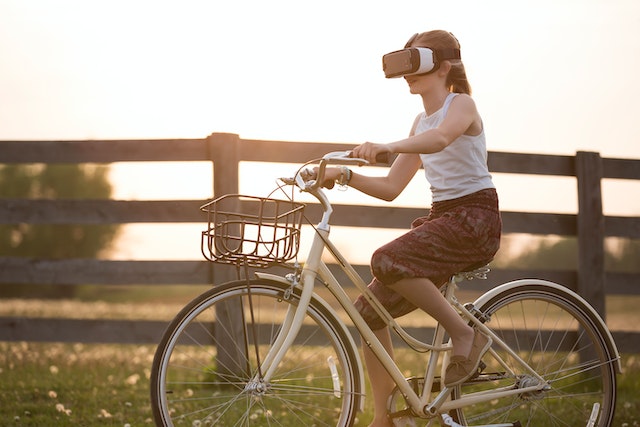Virtual reality is changing the world. It aids doctors in performing surgery, nurses in emergency training, and classrooms in teaching difficult concepts. It’s opening up whole new worlds for video games, virtual tourism, and social networking. This affects our lives, not just as individuals but as society itself. With this in mind, it makes sense to bring virtual reality up to date with the advances of modern technology and question the benefits humanity gains from virtual reality.
So how does augmented reality work? Augmented Reality (AR) is a technology that layers computer-generated images or data in the real world. It provides a composite view of the world that allows the user to interact with his or her environment in real time. AR can be used for many purposes: games, medicine, architecture and construction, entertainment, and training.
Here are 4 ways virtual reality is making a difference for humankind.
1. Surgery
Virtual reality is currently being used to help with surgical training. In the past, surgeons would perform tasks like amputating a person’s arm by looking at a cadaver and repeating the task over and over again. This method is very time-consuming and costs the hospital a lot of money. Virtual reality allows a surgeon to work on a cadaver with real-time movements until they become comfortable with it all. This allows them to work as humans in real-time while they learn how to perform the task.
The benefits of using virtual reality for surgery go beyond training surgeons correctly. It also prevents complications that can increase the cost of operations. By practicing the procedure on a virtual patient, surgeons can discover problems before they happen and learn ways to correct them with less blood loss and faster recovery. This is important for surgeries performed on adults suffering from obesity or heart issues.
Virtual reality surgery is also used for surgical procedures that would have been too risky to perform on human cadavers. For example, a surgeon might want to perform the removal of a brain tumor on a virtual patient so that he doesn’t have to put the patient at risk by cutting through the skull. The added benefit of this is that the surgeon can better understand exactly how much pressure is required and how to apply it while they are doing the procedure.
2. Virtual tourism
Virtual reality can be incredibly fun and exciting to visit places you might not want to go to. Imagine being able to walk through the Great Wall of China or the Taj Mahal without ever actually making it there. Virtual reality makes this possible because you see a representation of these places in your mind. You are also getting warnings about threats such as snakes and other dangers that might be present.
With virtual tourism, you can experience something as true as possible. However, this doesn’t mean it’s the same as being there. You’re not getting the real feelings or setting you experience in the “real” world. For example, when you take a virtual tourism look at a mountain, you’re not getting the real feeling of wind and temperature that an actual mountain climber gets because your eyes and brain are seeing a computer simulation.
3. Games
Virtual reality can also be used for entertainment by playing games with other people worldwide. With a gaming headset such as a VR visor, you can get warn and play a video game that puts you in another place. It could be fighting against other people at a theme park or traveling through outer space to get away from your enemies.
Games are built upon the goal of winning. So although virtual reality does have educational and entertainment benefits, it’s ultimately built for competition. This competitive nature can lead to social isolation because some children spend more time playing games than doing other important things for their development.
Augmented Reality (AR) is a technology that layers computer-generated images or data in the real world. It provides a composite view of the world that allows the user to interact with his environment in real-time. AR can be used for many purposes: games, medicine, architecture and construction, entertainment, and training. Here are 4 ways virtual reality is making a difference in our lives.
4. Social Networking
People use virtual reality to let people who can’t be present at an event participate in it. You don’t have to be in the same place when a friend is somewhere. You can share your experience with others who are far away from you. It’s like a video call, only more engaging and interactive.
Virtual Reality has made great strides in development thanks to modern technology such as smartphones and powerful gaming engines. People can immerse themselves in other locations and realities. This has caused a radical change in the world and has made it much more flexible and understandable. Studies have already been done in the field of education and have proved that VR has great potential for improving training and education.
Virtual reality has come far from its origins as an amusement park ride. It’s now used to research, train, market, and learn about other cultures worldwide. In addition to these uses, virtual reality will continue to develop further into an experience that feels more like a memory than a video game.
Bottom Line
In conclusion, virtual reality is making a huge difference in people’s lives worldwide, from surgeons to doctors and teachers. It’s helping people improve their lives by doing things they were never able to do. Virtual reality also makes a difference in many other areas of life by giving people a new way to express themselves. As technology continues to grow and change, virtual reality will become more and more integrated into other parts of people’s lives.






